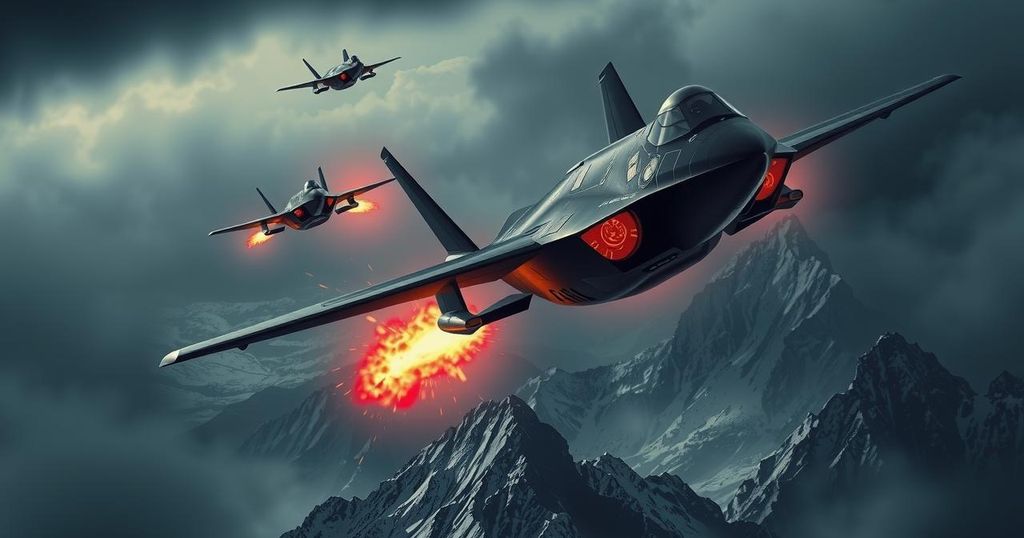U.S. Conducts Precision Strike on Iran’s Nuclear Facilities, Marking a Strategic Shift

The U.S. has conducted a precision strike on Iran’s nuclear facilities, notably Fordow, utilizing B-2 bombers and Tomahawk missiles. This operation, viewed as a major success by President Trump, aims to cripple Iran’s nuclear capabilities following failed diplomatic efforts, altering the geopolitical landscape in the region and raising fears of possible retaliation from Iranian proxy groups.
In a dramatic display reminiscent of a high-stakes movie, the United States has conducted a precision strike on Iran’s heavily fortified nuclear sites. Using B-2 Spirit bombers, the U.S. targeted the Fordow facility, located deep within the mountains near Qom. This operation, occurring on June 21, 2025, marks a significant escalation, shattering both concrete bunkers and the longstanding assumption that diplomacy could halt Iran’s nuclear ambitions.
The Fordow facility is reported to be a crucial component of Iran’s clandestine nuclear program and had been deemed nearly invulnerable, previously thought untouchable. The U.S. assault saw B-2 bombers drop GBU-57 munitions, each weighing approximately 15 tons, penetrating over 60 meters of rock to strike at the heart of Iran’s nuclear efforts. But Fordow was not alone in facing destruction — the assault also targeted sites in Natanz and Isfahan.
Additionally, the operation was complemented by waves of Tomahawk missiles launched from submarines, which destroyed power grids and command infrastructure, further crippling Iran’s military capabilities. These simultaneous attacks were approved during a classified briefing on Marine One, with President Donald Trump declaring the operation a “total success,” stating that Iran’s uranium enrichment capability was “obliterated.” This action was taken after diplomatic talks failed to progress following a 60-day ultimatum.
Fordow’s status as a pivotal site in uranium enrichment became alarmingly clear after the IAEA reported uranium enriched to 83.7%, dangerously close to weapons-grade. The facility was buried deep to resist conventional warfare, relying on a sophisticated protection strategy that only the B-2 Spirit could breach. Despite Israel’s willingness to act, it lacked the necessary aircraft and munitions, remaining limited to less impactful surgical strikes.
The fallout from this strike is immense. Iran’s capacity for high-level enrichment has been severely hampered, as satellite images reveal craters and smoke plumes emerging from the targeted sites. The once-defiant tone emanating from Tehran has noticeably quieted. But this does not herald peace; the regional proxies of Iran, including Hezbollah and various militia groups across Iraq and Yemen, are primed for potential retaliation, most likely aimed at Israel.
Strategically, this operation signals a shift in how the Trump administration views Iran — not merely as a threat but as a regime that must be dismantled. The broader geopolitical implications include disrupting Chinese access to Iranian oil, limiting the arms trade with Russia, and reassuring Gulf partners while securing vital strategic waterways.
While European allies like Britain, France, and Germany did not engage directly in the military action, they have expressed support, deploying their aircraft into Gulf airspace and ensuring naval forces are nearby. This move has especially resonated with Israel, which sees the U.S. action as validation, especially after weeks of responding to fire from Iranian proxies.
What once existed as mere speculation has now unfolded into reality, altering the nuclear landscape of the Middle East. In the hours following the operation, the implications of the strikes reverberated through diplomatic channels, marking a pivotal moment that could redefine international relations in the region. President Trump has set the stage for a new paradigm, delivering a powerful message — one that is perceived as a resolute reckoning.
The U.S. airstrike on Iran’s nuclear facilities marked a daring and impactful escalation in tensions, fundamentally altering the nuclear landscape of the Middle East. With precision attacks on Fordow, Natanz, and Isfahan, the U.S. has significantly disrupted Iran’s nuclear ambitions and shifted regional dynamics. While allies support the initiative, potential retaliations by Iranian proxies raise concerns about further escalation.
Original Source: www.dailynewsegypt.com




